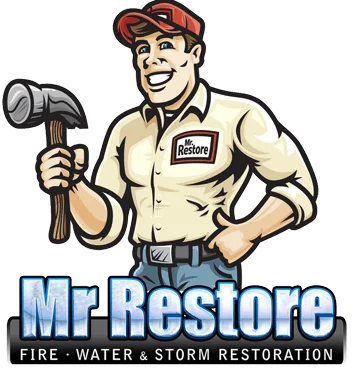At Mr. Restore, we have shared many ways to prepare for an upcoming storm, hurricane, and tornado; but what about after a storm? Texas is no stranger to serious storms.
Even the most prepared homes can still suffer from serious water, wind, and hail damage. Once the storm has passed and it has been deemed safe to go outside, you should check around your home for the following signs of damage. Even if you feel there has been no damage, it is always best to check just in case. Remember, if you notice any signs of damage, immediately contact Mr. Restore. The longer you wait to address water and wind damage, the worse it will get, leading to more damage and more costly repairs.
Check Your Roof for Damage
The first thing you should check after a serious storm is your roof. Your roof is the most vulnerable part of your home during a storm. It is subject to serious winds, hail, and even branches and other projectiles during a storm. A broken or damaged roof can lead to extensive water damage if not fixed properly.
The first and most obvious way to check for damage is to walk around the top floor of your home and check for leaks on the ceiling. Be sure there are no water stains or drips, as this indicates that there is damage to your roof.
You should also look outside, directly at your roof. Most of the obvious damage can be observed from the ground. If you don’t feel comfortable walking along the top of your roof, you can call a professional to check for you. You should be looking for the following indicators of damage:
- Split seams
- Missing shingles
- Obvious holes or cracks
Check the Exterior Of Your Home For Damage
After checking your roof, you should walk around your home to check for damage. Serious storms can cause your siding to be ripped off, windows to be broken, and projectiles (lawn furniture, tree limbs, and other debris) to puncture your home. You should check for the following signs of damage around the outside of your home:
Detached gutters or trim: If the wind has caused your trim or gutters to become detached, it is important that you contact a professional to reattached them. If they are not fixed in a timely manner, rainwater will not be disposed of properly and will seep into your home, causing serious water damage.
Dents, holes, cracking, or chipping to your siding: Some damage to your siding may be difficult to see at first glance, so be sure that you are paying extra attention to your siding. If you have a brick exterior, it is likely that you haven’t experienced too much damage. However, if you have vinyl siding or stucco, be sure to check for any signs of wear and tear after a storm.
Other Places to Look For Damage
There are other places around your yard and neighborhood that you should check for damage. Although it is not directly attached to your home, other areas can directly affect your home later if not dealt with properly.
Walk around your yard and dispose of any items that may have landed on your property due to high winds. These items are dangerous because a future storm could send them flying into your home. The most common form of leftover debris includes branches, lawn furniture, and garbage/garbage cans.
Check your driveway and nearby sidewalks for any cracks or serious damage. Damaged concrete near your home can lead to foundation damage and water damage.
Check under your crawlspace for any damage. Sometimes, homeowners forget about their crawlspace only to discover later that there has been standing water from a storm wreaking havoc on their foundation.
Lastly, walk around your neighborhood to be sure there are no fallen power lines. Do not attempt to move fallen power lines on your own, call 911 and the power company immediately.
Mr Restore’s experienced technicians are experts when it comes to storm damage cleanup and restoration. We want to help our community and its families get back to normal faster after a serious storm or tornado. If you experience damage or need help cleaning up after a store, immediately contact Mr. Restore. We will arrive at your property within 60 minutes to assess the damage and begin repairs.






